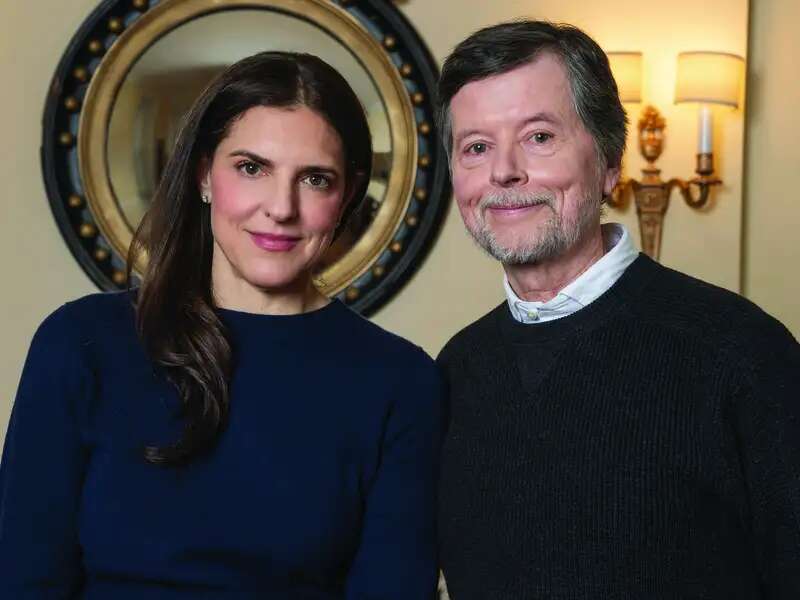
Ahead of Ken Burns’s Latest Docuseries, Co-Director Sarah Botstein '94 Shares her Path, Process.
I first spoke to Andrea Shepard ’77 when she called me breathlessly last spring to say that she had received my emails but had been too busy with the Harvey Weinstein trial to get back to me — he’d been pronounced guilty the day before. She promised to call me back and hung up.
Shepard is not a lawyer, but she’s been in the room for many of the iconic New York trials of the past three decades, including those involving J.K. Rowling, Woody Allen, and Rudy Giuliani. She’s there in the general public seating area, accompanied by an array of pastels and her mother, Shirley. The two women make up a courtroom sketch artist duo that has been going where cameras cannot since 1991.
As a Phi Beta Kappa economics major at Barnard, Shepard did nearly become a lawyer, though, making her eventual career path strangely serendipitous. Shepard entered Barnard on crutches due to hip surgery, and she says her physical limitations changed her trajectory. “I walked with a cane and then on my own two feet but with limited distance,” Shepard recalls. She was interested in law but decided against it because “the heavy books were too physically difficult at the time.”
Instead she went to graduate school in economics at Columbia, earning an M.A., an M.Phil., and starting but not finishing a Ph.D. During this time, she worked at Nokia Bell Labs — then called Bell Telephone Laboratories — where she performed financial analysis and forecasting. The company was eventually bought out by AT&T, and she found she was using her economics degree less and less, assuming more of a managerial role. After 15 years, she took a buyout. That’s where sketching came in. Shepard and her mother learned at a party that WNBC, a local television station, was looking for a courtroom sketcher, so they showed up at the trial, and something clicked.
“It was just a chance. I didn’t become a courtroom artist,” Shepard says. “It was fun. It was very different from AT&T.” Not that art came out of nowhere. Shepard’s mother worked in fashion and textiles before their gig as a courtroom duo, and Shepard describes herself as interested in art from a young age. While at Barnard, she was the layout editor for the 1977 Mortarboard, and she also helped design T-shirts for the Barnard Store and the Barnard Spring Festival.
So what’s it like to sketch the legal system’s most famous witnesses? “I don’t like it anymore to stay for a whole trial. It gets very boring,” Shepard says. “Arraignments are very good. You only see a person for three minutes.”
She describes Weinstein the way only an artist can: the way he leans over, “very thin eyes,” “a hint of yellow in his hair.” Colors often turn up in her stories. Shepard and her mother encountered Weinstein while waiting for the elevator on the first day of the trial. He was wearing all black, “and my mom said, ‘Why are you wearing dark colors, no colors, like your tie? What is it, like a death thing?’”
The next day he wore gray.
Shepard emphasizes the importance of a well-rounded education in order to have a wide-ranging career. “I think you should learn art, music, everything from a B.A.,” Shepard says.“It doesn’t necessarily mean you’re going to get a job in it. Barnard didn’t teach me to do things just because that was where the money was.”
This range is especially needed in a time when technological developments have rapidly changed the kinds of jobs that are needed or sought after.
“Is there a straight line to a career or life?” Shepard muses. “No — it seems circular to me. Sometimes you got to go with the flow and be flexible in your decisions. I didn’t plan my career but was always open to opportunities and adventures that entered my path."